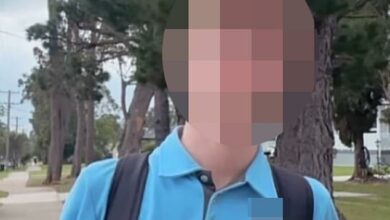Within the drive to transform every river, creek and water source in the planned Blayney gold mine into an Aboriginal heritage site

A co-director of an Indigenous company that opposed the construction of a $1 billion gold mine in a region of New South Wales had tried unsuccessfully to have every creek, lake and river in that area registered as Aboriginal heritage.
Environment Minister Tanya Plibersek recently blocked the proposed location of a tailings dam for the gold mine in Blayney, in the state’s central west.
In mid-August, she issued a protection order for indigenous heritage, rejecting the planned construction of the dam at the mine.
The Wiradjuri Traditional Owners Central West Aboriginal Corporation has asked the Minister to protect the headwaters and sources of the Belubula River, as these sites play a central role in creation stories.
That’s despite the fact that the NSW Independent Planning Commission originally approved the mine in March 2023, a process that involved consultation with the Orange Local Aboriginal Land Council, the elected body for local Indigenous leaders.
In 2021, Lisa Paton, a director of the Wiradjuri Traditional Owners Central West Aboriginal Corporation, attempted to have all waterways in Blayney registered as Aboriginal sites by the state’s Office of Environment & Heritage. The Australian reported.
“This (application) applies to ALL NATURAL waterways within the Blayney Shire Council Region, including all waterways that are no longer flowing, 100 metres either side of waterways, rivers, creeks, wetlands and lakes,” she wrote in her application, which was ultimately rejected.
‘All waterways in the nominated area are known for their deep spiritual significance.

Lisa Paton is co-director of the Wiradjuri Traditional Owners Central West Aboriginal Corporation, which has spoken out against the proposed location of a tailings dam at a $1 billion gold mine being built in Blayney, NSW.
‘For the Wiradjuri people, the connection to the river was linked to their kin. Everyone was responsible for the care and protection of a part of the river and waterways that were connected to their family ties.’
The revelation was heavily criticised by Sky News presenter Caleb Bond.
“Imagine if we applied that across the country,” he said.
“Every waterway in the country is now kind of a sacred Indigenous place because I’m sure every waterway in the country has had an Indigenous person drink from it or fish from it at some point,” he said.
‘You could say that about every piece of land in the country.’
When Ms Paton submitted her application, Regis, the company behind the gold mine, had already been in discussions about the mine for five years with indigenous groups, including the group of which she is a director.
Ms Paton also once worked for the Orange Local Aboriginal Land Council, according to her LinkedIn page, and also does heritage research with the Belubula Headwaters Protection Group.

Ms Paton had previously applied for every waterway in Blayney to be registered as an Aboriginal heritage site
In 2021, Ms Paton launched a petition to the then Minister of Environment, Sussan Ley, objecting to the establishment of the gold mine.
Just over 300 signatures were collected.
Ms Paton successfully registered an Aboriginal burial site on the western side of the proposed gold mine site in 2020.
Roy Ah-See, representative of the Orange Local Aboriginal Land Council and an elder of the indigenous people, said earlier that Ms Plibersek’s decision undermined the recognised authority of the council.
“Not all Aboriginal people are environmentalists, we want to empower our people economically,” Ah-See said.
“Our children want to be part of the economic foundation for future generations.”
The NSW Environment Protection Authority also said the impact on the Belubula River would be ‘minimal’.
Ms Plibersek had previously indicated that she objected to the construction of the tailings dam on 400 hectares of the 2,500 hectare site and suggested that the company find an alternative site for the dam.
Regis CEO Jim Beyer previously said the decision made the project unviable because the alternative locations for the tailings dam also fell within the exclusion zone.
“We still have a lot of work ahead of us to understand what the alternative is for the waste processing plant,” Mr Beyer told reporters in Orange last month.

Tanya Plibersek issued an Indigenous Heritage Protection Order in mid-August rejecting the proposed location of a tailings dam at the gold mine (pictured)
He said it would take years to conduct the necessary geotechnical drilling and environmental studies to identify a new site.
“At this point we don’t know exactly which direction to go,” he said.
“We will look at it because it is a project worth pursuing, but we just don’t know for how long. It could take five to 10 years.”
Regis directors have met with various New South Wales government ministers to discuss possible next steps.



